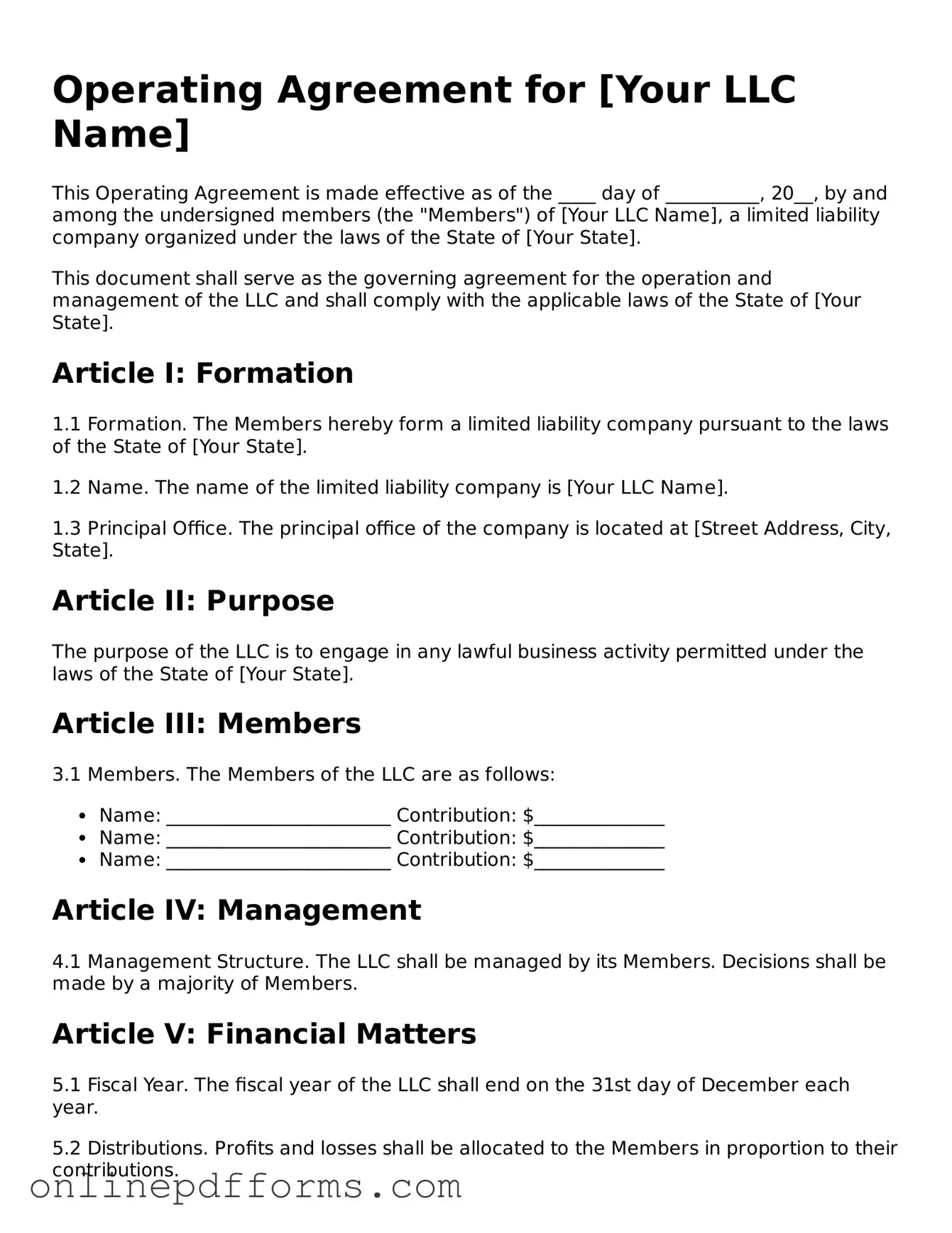An Operating Agreement is a crucial document for Limited Liability Companies (LLCs), but it shares similarities with several other legal documents that outline the governance and operational structure of a business. One such document is the Partnership Agreement. This agreement is essential for partnerships, detailing the roles, responsibilities, and profit-sharing arrangements among partners. Like an Operating Agreement, it serves to clarify expectations and prevent disputes by outlining how decisions are made and how profits are distributed.
Another document that resembles an Operating Agreement is the Bylaws of a corporation. Bylaws govern the internal management of a corporation, specifying the roles of directors and officers, meeting protocols, and voting procedures. Both documents aim to provide a clear framework for operations, ensuring that all members or shareholders understand their rights and obligations within the organization.
The Shareholders Agreement also shares similarities with an Operating Agreement. This document is designed for corporations and outlines the rights and responsibilities of shareholders. It often includes provisions on how shares can be transferred and how disputes among shareholders will be resolved. Just like an Operating Agreement, it aims to protect the interests of its members and maintain harmony within the company.
A Joint Venture Agreement is another document that parallels an Operating Agreement. This agreement is used when two or more parties collaborate on a specific project or business activity. It outlines each party's contributions, responsibilities, and how profits or losses will be shared. Both documents are essential for defining the relationship between parties and ensuring clarity in operations.
The Limited Partnership Agreement is similar as well, particularly for businesses structured as limited partnerships. This document details the roles of general and limited partners, including their rights, responsibilities, and how profits are allocated. Like an Operating Agreement, it helps to establish a clear understanding of each partner's involvement and protects their interests.
A Franchise Agreement can also be compared to an Operating Agreement. This document governs the relationship between a franchisor and franchisee, outlining the rights and obligations of both parties. It includes operational guidelines, fees, and marketing responsibilities, similar to how an Operating Agreement sets forth the operational framework for an LLC.
The Employment Agreement is another document that bears resemblance to an Operating Agreement. While it primarily focuses on the relationship between an employer and employee, it often includes terms related to confidentiality, non-compete clauses, and job responsibilities. Both documents aim to create clear expectations, although they focus on different aspects of business operations.
A Non-Disclosure Agreement (NDA) shares a common goal with an Operating Agreement: protecting sensitive information. While an NDA focuses on confidentiality between parties, an Operating Agreement outlines the operational structure of a business. Both are vital in safeguarding the interests of the parties involved and ensuring that proprietary information remains secure.
Lastly, a Business Plan can be seen as a broader document that shares some similarities with an Operating Agreement. While a Business Plan outlines the overall strategy, market analysis, and financial projections for a business, an Operating Agreement focuses on the internal workings and governance of the company. Both documents are essential for guiding the business toward its goals and ensuring that all stakeholders are aligned in their vision.
